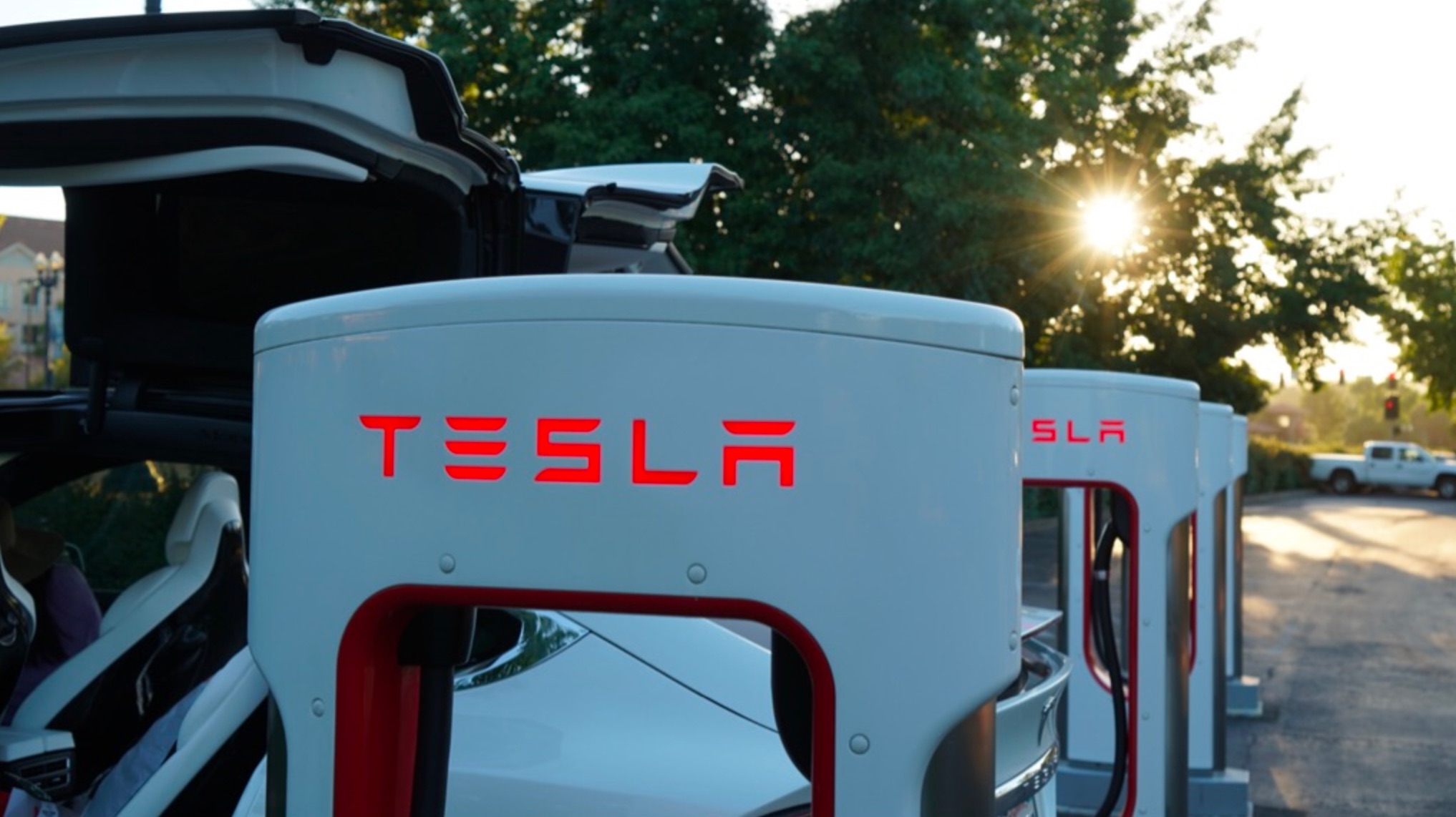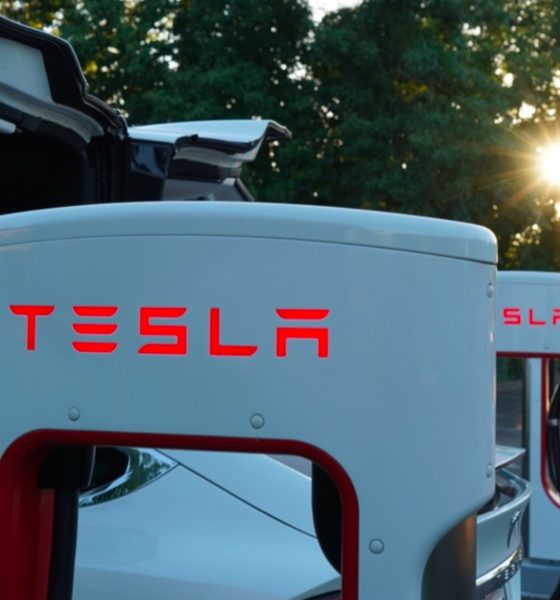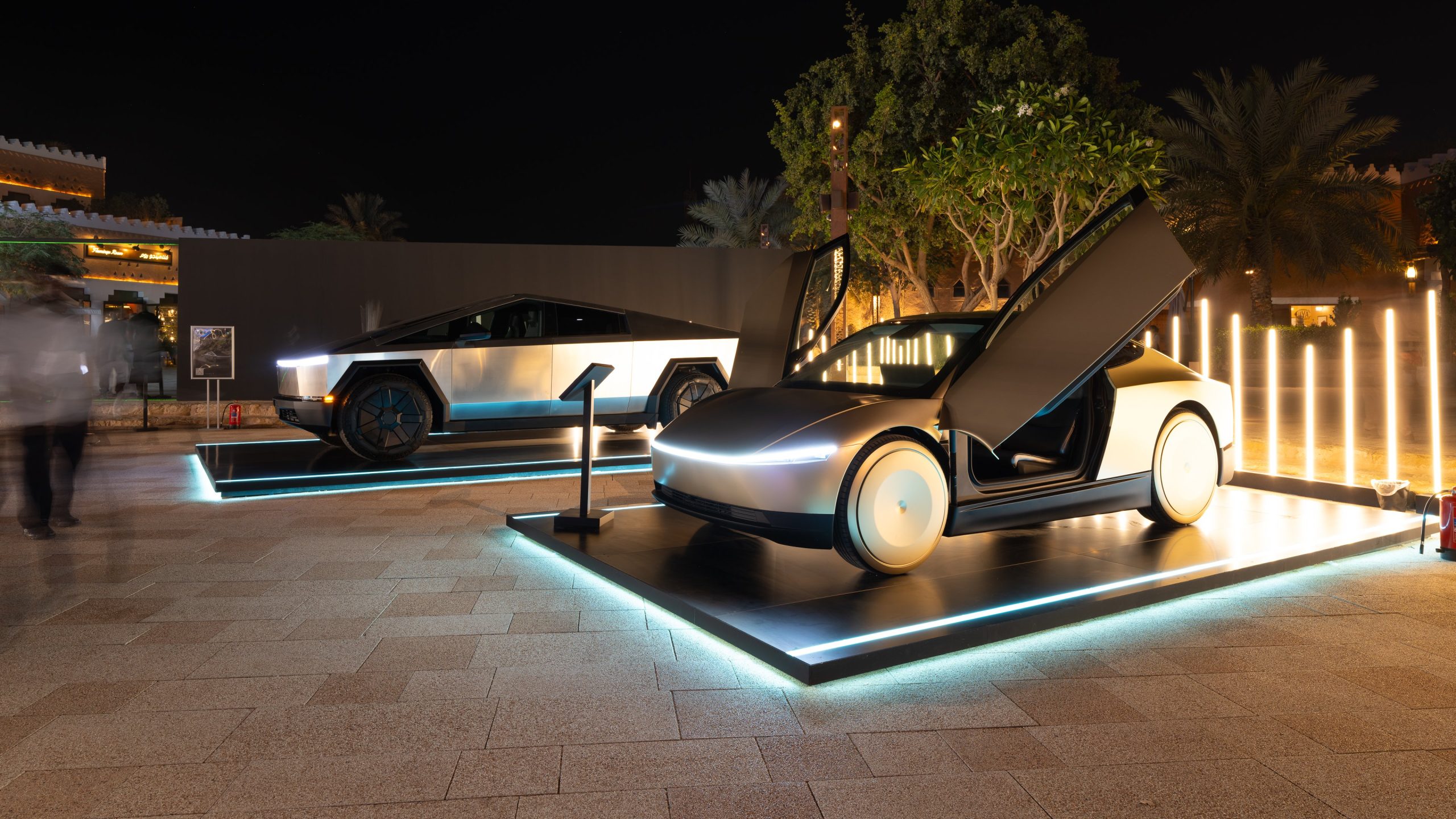

Investor's Corner
Is Tesla’s ‘next era’ really without TSLA?
With just a few Tweets, Elon Musk announced that he intends to take Tesla private. The move came less than a week after the company’s Q2 earnings call, where Musk doubled-down on his promise to bring the company to profit in the second half of 2018. With Musk steadying his hand, it seemed he was pushing forward a “new era” for Tesla, one that aims for mild profitability, rapid growth, and continuing innovation. What’s changed?
“Grandiose promises were replaced with reachable projections, relentless growth was met with fiscal responsibility, and shaky improvisation gave way to clarity,” written in last week’s post-earnings column.
Over the last few years, Musk has often wondered aloud how Tesla would be different if it weren’t public. In Rolling Stone’s cover story of Musk last fall, he stated, “It actually makes us less efficient to be a public company.” Musk also told Bloomberg in a 2015 interview that there is “a lot of noise” when a company is public.
Would Tesla have existed without going public in 2010?
Short Answer. No.
Long Answer. Maybe.
When Tesla went public in June 2010, the company needed the cash. They were aiming to push the Model S into production and needed every dime to hire factory workers and renovate the factory. Going public for Tesla worked. The company was able to move the Model S into production and was delivering a few hundred vehicles per week before raising more money from the capital markets.
Since going public, Tesla has raised nearly $10B through debt and equity offerings (Not including the acquisition of SolarCity’s debt). It’s a sizable amount, but it pales in comparison to some private companies. For example, Uber, Lyft, and WeWork have all raised billions in the last few years. Uber has raised over $21B since its founding in 2009, Lyft has raised $4.9B since its start in 2012, and WeWork has raised $6.9B in the last 8 years.
Before Tesla went public, Musk had to pour his fortune into the company just to convince others to invest. In the past eight years, the private markets have gained a tremendous appetite. No deal is too big. No ask is ridiculous.
Who wants in on “Private Tesla”?
A lot of names have been floating around in the past day. Who’s backing Elon’s private deal? The Saudi Wealth Fund? Tencent? Softbank? Google? All of the above?
In 2016, Softbank created a $93B Vision Fund. The fund has been making massive bets everywhere, Uber, Flipkart, WeWork, NVidia, and many more. Participating in “new Tesla” wouldn’t be out of character and it would be hard to see the company passing on one of the largest private deals in history.
The Saudi Wealth Fund and Tencent both recently made sizable equity positions in the company. Tesla going private could afford them a chance to grab a board seat and a larger share of the company. The Saudi Wealth Fund announced their sizable stake yesterday morning and Tencent announced theirs in March 2017.
Google? Did I just throw them out there? The company already owns a chunk of Musk’s SpaceX and in Ashlee Vance’s 2015 biography of Elon Musk, it was revealed that Google mulled acquiring the company for $6B in early 2013 (Tesla was worth $3-4B at the time). Google’s parent company has over $100B in cash on hand, so a sizable investment into Tesla is certainly doable.
Outside of those specific entities, its worth noting that Tesla could draw significant capital from Silicon Valley. While most private equity in the valley goes to companies far smaller than Tesla, it wouldn’t be shocking to see venture firms and fellow billionaires take a position in Tesla.
So what does “Private Tesla” really look like?
In Musk’s perfect “Private Tesla” scenario, he envisions all current investors to keeping their shares with the company. But how would that really work? Musk claims that it would be structured similarly to SpaceX, which allows employees and investors to buy or sell stock every 6 months (or other liquidation events, ie. investments). That structure gives Tesla much tighter control of the share price, preventing volatility.
Highlighted in a report from The Information, current SpaceX shareholders receive a disclosure packet, along with updated financials, every 5-9 months. The process allows the company to set their own share price, after gauging outside and inside interest in acquiring or selling shares. SpaceX currently holds a valuation of $28B.
“We can afford to be picky (with investors). There’s a lot more people wanting our stock than we are willing to sell. It’s a great place to be in.” – Gwynne Shotwell, COO of SpaceX (CNBC, May 2018)
With Tesla being private, the company would forgo reporting quarterly earnings, most SEC filings, and annual shareholders meetings. Additionally, Tesla would have more flexibility in their accounting practices and reporting and less regulatory concerns. Essentially, as Musk as stated, the company would be able to operate more efficiently.
Only time will tell if Musk can pull off “taking Tesla private”. Given the size of the private markets and Musk’s drive to reduce distractions within the company, Tesla could certainly end up going private. I wouldn’t bet against Musk, just a personal rule, and it wouldn’t be out-of-character for Musk to pull off the impossible.
Great reads:
Tesla board curbs critics’ doubts as Elon Musk’s privatization plan starts forming (Teslarati)
Elon Musk: The Architect of Tomorrow (Rolling Stone)
Google almost bought Tesla when it had just two weeks of cash left (The Guardian)
How SoftBank Is Reshaping Global Tech (The Information)

Investor's Corner
SpaceX IPO is coming, CEO Elon Musk confirms
However, it appears Musk is ready for SpaceX to go public, as Ars Technica Senior Space Editor Eric Berger wrote an op-ed that indicated he thought SpaceX would go public soon. Musk replied, basically confirming it.

Elon Musk confirmed through a post on X that a SpaceX initial public offering (IPO) is on the way after hinting at it several times earlier this year.
It also comes one day after Bloomberg reported that SpaceX was aiming for a valuation of $1.5 trillion, adding that it wanted to raise $30 billion.
Musk has been transparent for most of the year that he wanted to try to figure out a way to get Tesla shareholders to invest in SpaceX, giving them access to the stock.
He has also recognized the issues of having a public stock, like litigation exposure, quarterly reporting pressures, and other inconveniences.
However, it appears Musk is ready for SpaceX to go public, as Ars Technica Senior Space Editor Eric Berger wrote an op-ed that indicated he thought SpaceX would go public soon.
Musk replied, basically confirming it:
As usual, Eric is accurate
— Elon Musk (@elonmusk) December 10, 2025
Berger believes the IPO would help support the need for $30 billion or more in capital needed to fund AI integration projects, such as space-based data centers and lunar satellite factories. Musk confirmed recently that SpaceX “will be doing” data centers in orbit.
AI appears to be a “key part” of SpaceX getting to Musk, Berger also wrote. When writing about whether or not Optimus is a viable project and product for the company, he says that none of that matters. Musk thinks it is, and that’s all that matters.
It seems like Musk has certainly mulled something this big for a very long time, and the idea of taking SpaceX public is not just likely; it is necessary for the company to get to Mars.
The details of when SpaceX will finally hit that public status are not known. Many of the reports that came out over the past few days indicate it would happen in 2026, so sooner rather than later.
But there are a lot of things on Musk’s plate early next year, especially with Cybercab production, the potential launch of Unsupervised Full Self-Driving, and the Roadster unveiling, all planned for Q1.
Investor's Corner
Tesla Full Self-Driving statistic impresses Wall Street firm: ‘Very close to unsupervised’
The data shows there was a significant jump in miles traveled between interventions as Tesla transitioned drivers to v14.1 back in October. The FSD Community Tracker saw a jump from 441 miles to over 9,200 miles, the most significant improvement in four years.

Tesla Full Self-Driving performance and statistics continue to impress everyone, from retail investors to Wall Street firms. However, one analyst believes Tesla’s driving suite is “very close” to achieving unsupervised self-driving.
On Tuesday, Piper Sandler analyst Alexander Potter said that Tesla’s recent launch of Full Self-Driving version 14 increased the number of miles traveled between interventions by a drastic margin, based on data compiled by a Full Self-Driving Community Tracker.
🚨 Piper Sandler reiterated its Overweight rating and $500 PT on Tesla $TSLA stock
Analyst Alexander Potter said FSD is near full autonomy and latest versions showed the largest improvement in disengagements, from 440 miles to 9,200 miles between critical interventions pic.twitter.com/u4WCLfZcA9
— TESLARATI (@Teslarati) December 9, 2025
The data shows there was a significant jump in miles traveled between interventions as Tesla transitioned drivers to v14.1 back in October. The FSD Community Tracker saw a jump from 441 miles to over 9,200 miles, the most significant improvement in four years.
Interestingly, there was a slight dip in the miles traveled between interventions with the release of v14.2. Piper Sandler said investor interest in FSD has increased.
Full Self-Driving has displayed several improvements with v14, including the introduction of Arrival Options that allow specific parking situations to be chosen by the driver prior to arriving at the destination. Owners can choose from Street Parking, Parking Garages, Parking Lots, Chargers, and Driveways.
Additionally, the overall improvements in performance from v13 have been evident through smoother operation, fewer mistakes during routine operation, and a more refined decision-making process.
Early versions of v14 exhibited stuttering and brake stabbing, but Tesla did a great job of confronting the issue and eliminating it altogether with the release of v14.2.
Tesla CEO Elon Musk also recently stated that the current v14.2 FSD suite is also less restrictive with drivers looking at their phones, which has caused some controversy within the community.
Although we tested it and found there were fewer nudges by the driver monitoring system to push eyes back to the road, we still would not recommend it due to laws and regulations.
Tesla Full Self-Driving v14.2.1 texting and driving: we tested it
With that being said, FSD is improving significantly with each larger rollout, and Musk believes the final piece of the puzzle will be unveiled with FSD v14.3, which could come later this year or early in 2026.
Piper Sandler reaffirmed its $500 price target on Tesla shares, as well as its ‘Overweight’ rating.
Investor's Corner
Tesla gets price target boost, but it’s not all sunshine and rainbows

Tesla received a price target boost from Morgan Stanley, according to a new note on Monday morning, but there is some considerable caution also being communicated over the next year or so.
Morgan Stanley analyst Andrew Percoco took over Tesla coverage for the firm from longtime bull Adam Jonas, who appears to be focusing on embodied AI stocks and no longer automotive.
Percoco took over and immediately adjusted the price target for Tesla from $410 to $425, and changed its rating on shares from ‘Overweight’ to ‘Equal Weight.’
Percoco said he believes Tesla is the leading company in terms of electric vehicles, manufacturing, renewable energy, and real-world AI, so it deserves a premium valuation. However, he admits the high expectations for the company could provide for a “choppy trading environment” for the next year.
He wrote:
“However, high expectations on the latter have brought the stock closer to fair valuation. While it is well understood that Tesla is more than an auto manufacturer, we expect a choppy trading environment for the TSLA shares over the next 12 months, as we see downside to estimates, while the catalysts for its non-auto businesses appear priced at current levels.”
Percoco also added that if market cap hurdles are achieved, Morgan Stanley would reduce its price target by 7 percent.
Perhaps the biggest change with Percoco taking over the analysis for Jonas is how he will determine the value of each individual project. For example, he believes Optimus is worth about $60 per share of equity value.
He went on to describe the potential value of Full Self-Driving, highlighting its importance to the Tesla valuation:
“Full Self Driving (FSD) is the crown jewel of Tesla’s auto business; we believe that its leading-edge personal autonomous driving offering is a real game changer, and will remain a significant competitive advantage over its EV and non-EV peers. As Tesla continues to improve its platform with increased levels of autonomy (i.e., hands-off, eyes-off), it will revolutionize the personal driving experience. It remains to be seen if others will be able to keep pace.”
Additionally, Percoco outlined both bear and bull cases for the stock. He believes $860 per share, “which could be in play in the next 12 months if Tesla manages through the EV-downturn,” while also scaling Robotaxi, executing on unsupervised FSD, and scaling Optimus, is in play for the bull case.
Will Tesla thrive without the EV tax credit? Five reasons why they might
Meanwhile, the bear case is placed at $145 per share, and “assumes greater competition and margin pressure across all business lines, embedding zero value for humanoids, slowing the growth curve for Tesla’s robotaxi fleet to reflect regulatory challenges in scaling a vision-only perception stack, and lowering market share and margin profile for the autos and energy businesses.”
Currently, Tesla shares are trading at around $441.








